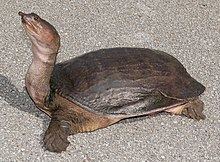Subfamily Trionychinae Order Turtle | Subphylum Vertebrata Genus Apalone Phylum Chordata Rank Species | |
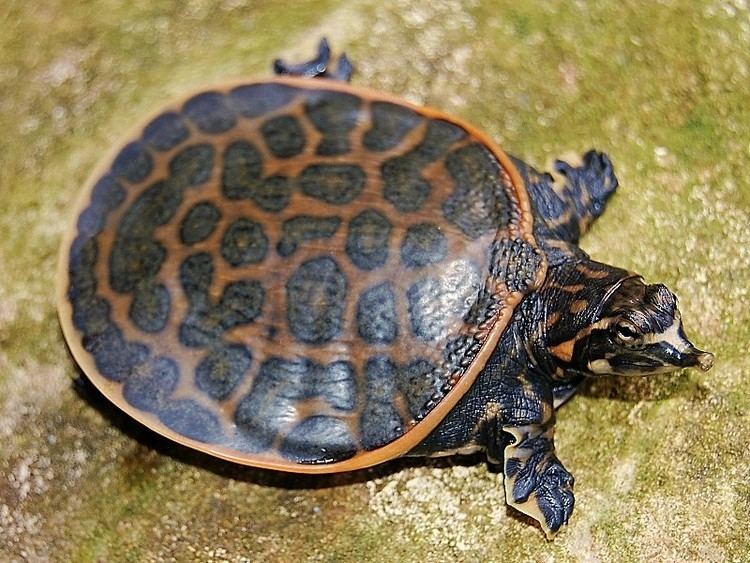 | ||
Similar Turtle, Apalone, Trionychidae, Spiny softshell t, Reptile | ||
Florida softshell turtle
The Florida softshell turtle (Apalone ferox) is a species of softshell turtle native to the Southeastern United States.
Contents
- Florida softshell turtle
- Baby florida softshell turtles
- Geographic range
- Description
- Behavior
- Ecology
- References
Baby florida softshell turtles
Geographic range
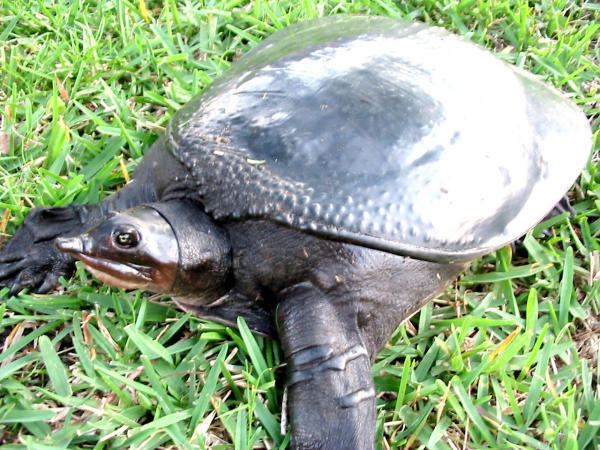
A. ferox is found primarily in the state of Florida, but it also ranges to southern sections of South Carolina, Georgia, Alabama, and Texas.
Description
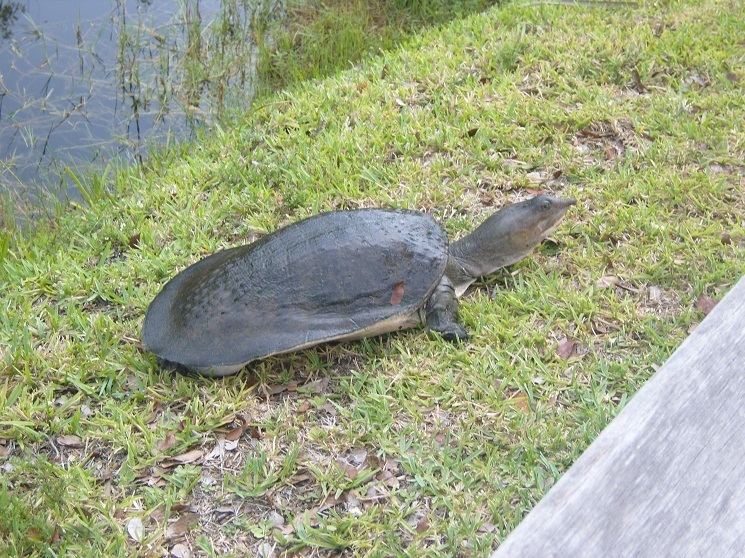
The Florida softshell turtle typically has a dark brown to olive green, leathery carapace with a white or cream-colored underside, which visually conceals young turtles from potential predators. It has a long neck and an elongated head with a long snorkel-like nose. It is the largest softshell turtle in North America and one of the largest freshwater turtles there, as well (only the alligator snapping turtle averages considerably larger), reaching about 15 to 76 cm (5.9 to 29.9 in) in length. The female is larger, with the average male reaching only about 35 cm (14 in). The female can weigh up to 20 kg (44 lb), with the record weight documented at 43.6 kg (96 lb). Nesting adult females were found to average 6.65 kg (14.7 lb) in weight, and measure 40.1 cm (15.8 in) in carapace length and 30.1 cm (11.9 in) in plastron length. In comparison, 127 males were found to average 2.68 kg (5.9 lb) in weight and measure 22.75 cm (8.96 in) in plastron length. In comparison, the juvenile is olive-yellow with grey spots and yellow lines. Also, yellow and orange markings are found on the head and the plastron is gray. The markings disappear or fade as it ages.
Behavior
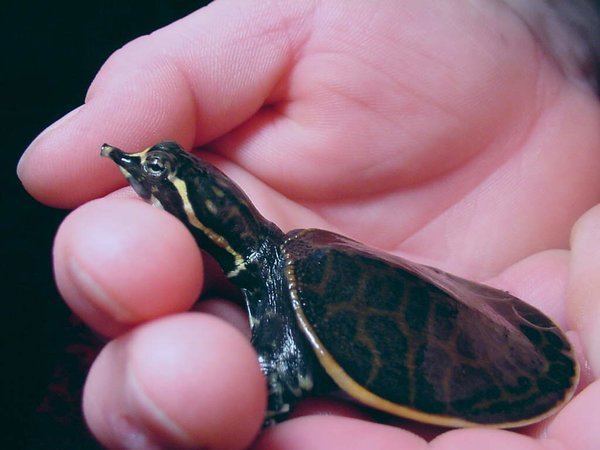
A. ferox is almost entirely aquatic, only emerging from the water to bask or to lay eggs. It prefers the still waters of ponds, streams, lakes, and swamps. Like all softshells, it is very fast-moving in water and on land. This species is carnivorous, consuming fish, insects, crustaceans, and molluscs. It may also scavenge.
Ecology
Alligators have been known to prey on the adults of A. ferox. Raptors may take juveniles. Nest predators include the fish crow, foxes, raccoons, and skunks.
